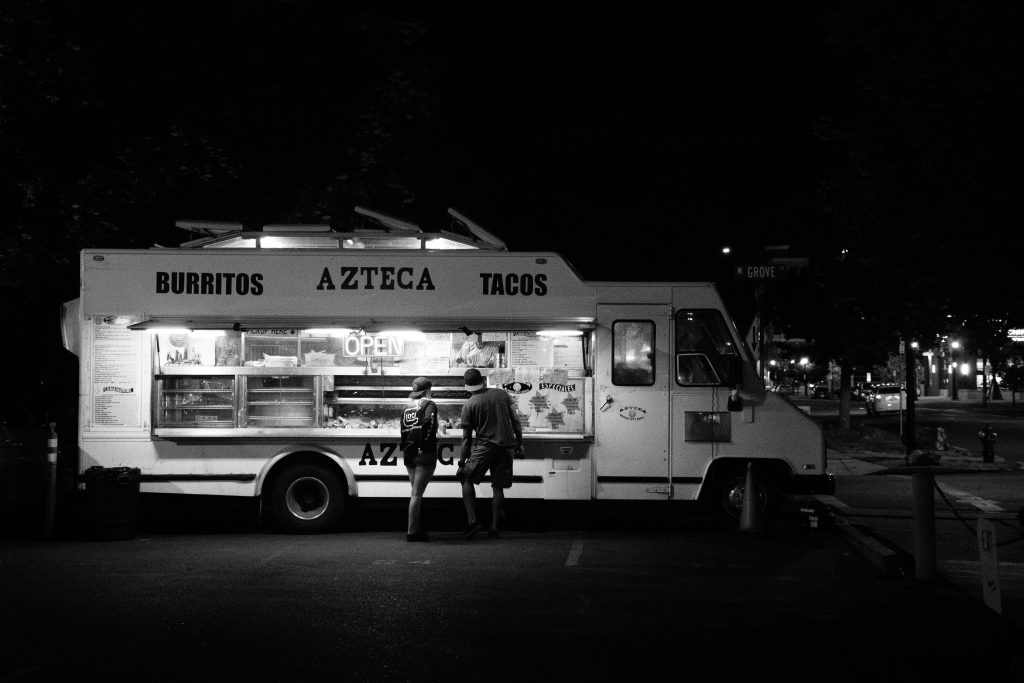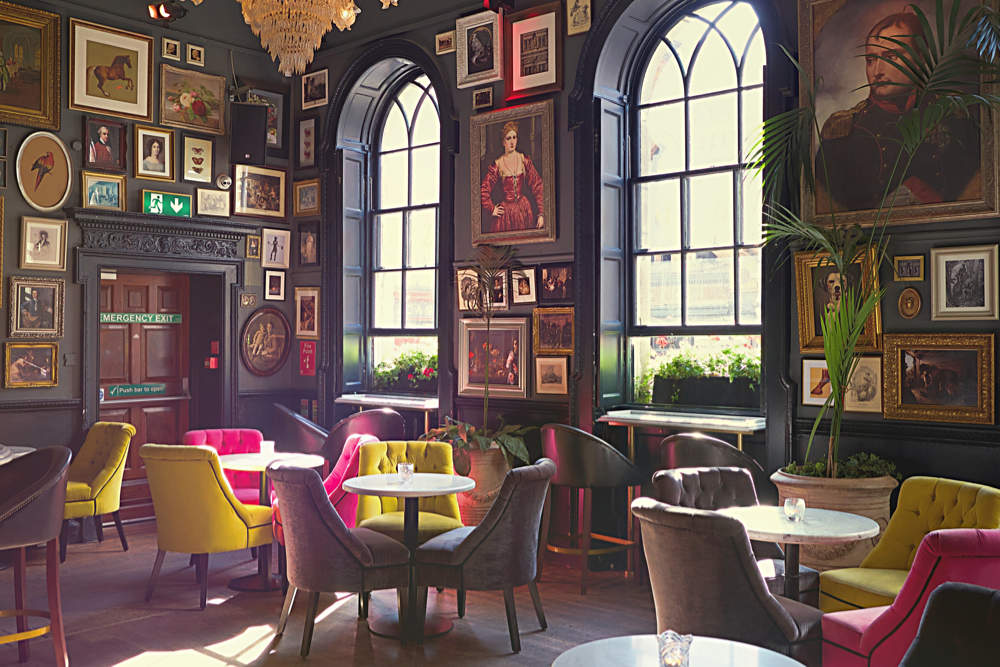An Introduction to Fine Dining Etiquette and Experiences

Have you ever envisioned what it would be like to eat in an environment that oozes class, elegance, and luxury? Do you desire to savor the finest culinary delights and feast like royalty? Then don’t look past good dining! Fine dining is an art form everyone should enjoy because of its focus on great quality, flawless service, and the best ingredients. In this manual, we’ll walk you through the fundamentals of great dining, covering everything from proper table manners to choosing the right drink. So, get dressed to the nines or don your finest suit, get ready to splurge, and let’s explore the world of fine dining! What is Fine Dining? Fine dining is a style marked by its superior quality of food, excellent service, and luxurious atmosphere. It is a way of eating associated with class, exclusivity, and sophistication. Unlike casual dining, fine dining emphasizes attention to detail and flawless presentation, with carefully curated menus that feature unique and high-quality ingredients. Fine dining restaurants are typically characterized by their high-end decor, including ambiance-enhancing lighting, elegant table settings, and plush furnishings. The waitstaff is highly trained and attentive, providing personalized service to guests throughout their dining experience. The menu often features exotic and rare ingredients that are skillfully prepared and presented in visually stunning ways. The Art of Table Setting Regarding fine dining, table setting is an important part of the overall experience. Not only does it add to the visual appeal of the meal, but it also sets the tone for the meal and can help to ensure a smooth, enjoyable experience. Here are some basic etiquette guidelines to follow for both casual and formal dining: Basic Table Setting Etiquette A basic table setting for a casual meal typically includes the following: A dinner plates A napkin A knife A fork A water glasses A wine glass (if wine is being served) Here is how to properly arrange these items on the table: Position the dinner plate in the center of the place setting. Fold the napkin and put it to the left of the plate. Place the fork to the left of the plate and the knife to the right. The sharp side of the knife should face the plate. Place the water glass above the knife and the wine glass to the right, slightly overhead to the right of the water glass. Formal Table Setting Etiquette Formal dining usually involves a more elaborate table setting. In addition to the basic items mentioned above, a formal table setting may also include the following: Multiple forks, knives, and spoons for different courses Bread plates and butter knives Salt and pepper shakers Multiple glasses for different types of beverages, such as champagne or liqueur Here is how to properly arrange a formal table setting: Place a charger plate (a larger plate that serves as a decorative base) in the center of the place setting. Place the dinner plate on top of the charger plate. Arrange the flatware in order of use, starting from the outside and working towards the plate. The soup spoon, if needed, goes to the right of the knives. Place the butter knife on top of the bread dish and place it to the left of the setting. The napkin can either be positioned to the left of the forks or tucked on the charger plate. Place the water glass and other beverage glasses above the knives and spoons in the order they will be used. Following these guidelines, you can assemble a beautiful and functional table setting that adds to the overall fine dining experience. Dress Code for Fine Dining Fine dining restaurants often have a dress code that requires guests to dress in a particular way. The dress code expectations can vary depending on the restaurant, so checking the dress code before dining is important. Dress Code Expectations for Men and Women For men, a suit or a jacket and tie is typically required for a fine dining experience. Dress pants, dress shoes, and a collared shirt are also appropriate. Avoid wearing sneakers, flip-flops, or athletic wear. A formal dress or a dressy skirt and blouse are suitable for women. Dress pants and blouses can also be worn. Avoid wearing jeans, shorts, or casual tops. Accessories and Grooming Requirements Accessories should complement the getup and not overpower it. For men, a belt, cufflinks, and a watch are appropriate. For women, jewelry such as earrings, necklaces, and bracelets can be worn. Avoid wearing anything too flashy or distracting. Grooming is an essential part of the dress code for fine dining. Proper grooming should include clean and neat hair, well-maintained nails, and clean and ironed clothing. Avoid anything seen as sloppy, such as wrinkled clothing or unkempt hair. Ordering in a Fine Dining Restaurant Ordering in a fine dining restaurant can be an intimidating experience if you’re not familiar with the process. Here are some tips for understanding the menu, interacting with the server, and selecting appropriate beverages: Understanding the Menu Fine dining menus can be complex and often feature unfamiliar ingredients or dishes. Here are some tips for understanding the menu: Take your time reading the menu; don’t be afraid to ask questions about the dishes. Some restaurants may offer a tasting menu, which allows you to try a selection of the chef’s signature dishes. Be aware of any ingredients you may be allergic to or have dietary restrictions against. Interacting with the Server Interacting with the server can be daunting in a fine-dining restaurant, but it’s an important part of the ordering process. Here are some important to keep in mind: Address the server respectfully and pay attention to their name if it’s provided. Ask for recommendations from the server if you’re unsure what to order. Be specific about any dietary restrictions or allergies that you may have. Selecting Appropriate Beverages Selecting appropriate beverages can enhance the overall dining experience. Here is some advice for selecting the perfect drink: Consider pairing wine with
A Matter of Taste: Comparing Fine Dining and Fast Food

When it comes to food, we all have different tastes and preferences. For some people, the mere thought of fast food is enough to turn their stomachs; for others, there’s no better comfort than a juicy burger and greasy fries. But what if you’re looking to go beyond burgers and burritos? Enter fine dining: an elevation in flavor that can unlock hidden depths in even the simplest ingredients. On one side, you have classic fast food staples; on the other, you have exquisite gourmet dishes crafted by talented chefs worldwide. So which wins out? Is it worth spending your hard-earned money on a fancy meal when there’s reliable—and cheap—fast food just around the corner? In this blog post, we’ll compare fine dining versus fast food, looking at cost comparison and quality before coming up with our conclusion! What is Fast Food? Regarding quick and convenient dining, fast food is the go-to choice for many. But what exactly is fast food? Simply put, it’s food prepared and served quickly to customers, often through a drive-thru window or counter service. Typically, fast food includes hamburgers, hot dogs, sandwiches, and fries, but it can also include items like salads, wraps, and frozen desserts. While it may not always be the healthiest option, fast food is popular for those on the go or looking for an affordable meal. So the next time you’re in a rush or craving something fast, consider trying one of the many options the fast food industry offers. What is Fine Dining? Fine dining is an art form for experiencing the best food, wine, and service. It is more than just grabbing a quick bite or rushing through a meal. Fine dining is a full sensory experience from walking through the establishment’s doors until you leave. It’s about savoring every moment and being present in the experience. Fine dining is achieved through attention to every detail, from the perfectly plated dishes to the elegant table settings. The chefs in a fine dining restaurant are highly trained and skilled, creating dishes with the best ingredients and often putting their spin on classic recipes. Fine dining isn’t just about the food but also the ambiance, with the lighting, music, and decor all coming together to create a truly special experience. What is the Difference Between Fine Dining and Fast Food? Quality of Food Delightful dining experiences derive from a thoughtful selection of the food’s ingredients, preparation, and cooking techniques. Fine dining venues choose exceptional, locally sourced produce and meat to produce visually stunning meals. Expert chefs use their experience in classic culinary techniques to create complex and rich flavors to heighten your taste buds. When it comes to fast food, convenience is the name of the game, but it can often come at a steep price. Many fast-food places use packaged and processed ingredients that can contain harmful additives, artificial flavors, and preservatives. The food is frequently cooked in large quantities, which can lead to fewer fresh ingredients. To maintain consistency, fast food restaurants stick to the same menu items, so meals always taste the same, no matter where you order them. Menu Selection Fine dining restaurants typically have smaller menus focusing on quality rather than quantity. These menus are often designed around a theme, such as a particular cuisine or seasonal ingredients, and may frequently change to showcase new and innovative dishes. Fine dining menus often include multiple courses, such as appetizers, main courses, and desserts, and may offer a tasting menu that allows diners to sample various dishes. Fast food restaurants have a vast selection of options, perfect for those seeking quick and convenient meals that cater to diverse tastes and preferences. Their menus highlight dishes that are easy to prepare and serve promptly, such as burgers, sandwiches, and fries, making them an ideal option for people on the go. Ambiance and Service Fine dining restaurants typically have an upscale, elegant atmosphere with formal table settings, linen tablecloths, and subdued lighting. The decor may include artwork, flowers, and other decorative touches. The service at a fine dining establishment is often highly attentive and personalized, with knowledgeable servers trained to offer wine and food recommendations and provide high customer service. The pace of the meal is often slow and leisurely, with multiple courses served over hours. On the other hand, fast food restaurants have a more casual and often busy atmosphere with bright lighting, plastic seating, and a fast-paced environment. The focus is on speed and convenience, with customers ordering at a counter and receiving their food quickly. The service is less formal and less personalized, with minimal interaction between customers and employees. Price Fine dining is synonymous with high-end prices. It is because these restaurants use fresh, high-quality ingredients and are staffed by skilled chefs who aim to give diners an upscale experience. You’ll even receive personalized service. But the cost of this luxury goes beyond what’s on your plate. Fine dining restaurants also have higher operating costs, such as rent and labor expenses, than fast food places. Additionally, you may find premium ingredients, detailed presentation, and unique culinary techniques, all contributing to the price of each dish. Fast food restaurants are budget-friendly and perfect for those on a budget. They utilize processed and pre-packaged ingredients, which are more affordable than fresh produce. Additionally, due to their high sales volume, they can capitalize on economies of scale and decrease costs per unit. A standardized menu and operational procedures make their processes more efficient and reduce overheads. In conclusion, fine dining and fast food restaurants are distinct dining experiences that differ in several aspects. Fine dining emphasizes quality, focusing on high-quality ingredients, intricate flavors, elegant ambiance, personalized service, and higher prices. It is often considered a special occasion or luxury dining experience. On the other hand, fast food emphasizes convenience, speed, affordability, casual ambiance, standardized menu, and lower prices. It is known for its accessibility and budget-friendly options. Both types of restaurants cater to different needs
How Seasons Affect the Food Truck Industry

The food truck industry is ever-changing, as seasonal shifts bring new challenges and opportunities. During the summer, the demand is high, and businesses strive to source enough ingredients to keep up with orders. These must be adjusted to soups and other heavier dishes in the fall as temperatures cool. As winter approaches, customers dwindle, yet there is an opportunity for experimentation in recipes. When spring returns, technology implemented during the slower months can help businesses make their operations more efficient and better prepare them for a return of customer demand when summer returns. From fluctuating business trends to varying logistics and supplies, let us explore how the weather, consumer habits, and other conditions shift throughout the year to shape this industry. Weather Conditions Severe Winter Weather During the colder winter, potentially severe weather can make operating an outdoor food truck incredibly dangerous. Heavy snowfalls and icy roads are only a few hazardous conditions that may put your business at risk. To stay safe, you’ll have to take suitable precautions or be forced to close shops until temperatures rise again -unless you transition into delivery services or indoor pop-up shops. Hot and Humid Summer Weather When the weather is unbearably hot and humid, customers often avoid outdoor vendors, such as food trucks, in favor of indoor locations. It can significantly decrease sales for these businesses during these months, especially in places with a tropical climate. Icy Roads and Heavy Snowfall Snow-covered roads can be treacherous for the food truck driver, making it difficult for them to reach their destination. Moreover, venturing out in such dire weather conditions may be too daunting for vendors and customers, inciting them to find refuge indoors instead. Temperate Climates The temperate climate makes it more appealing for vendors and customers to purchase goods and services from outdoor establishments, such as food trucks, due to the agreeable temperatures as opposed to extreme heat or cold. As a result, this leads to increased sales compared to harsher climates. Customer Preferences Weather Conditions Severe winter weather can bring extremely cold temperatures, heavy snowfall, icy roads, and other hazardous conditions, making it difficult for a food truck to operate outdoors safely. Without suitable precautions, the truck may have to close its business during these times and seek alternative means of selling, such as offering delivery services or hosting pop-up shops indoors. Hot and humid summer weather in certain climates can be uncomfortable for customers who would otherwise purchase from outdoor vendors like food trucks; this could lead to decreased sales due to customers seeking indoor locations instead. Consumer Habits Consumer habits tend to change with the seasons, with more people spending time outside and being willing to take risks during the warmer months and slower foot traffic during the colder months. During spring and summer, people tend to spend more time outdoors, which can mean higher foot traffic for outdoor vendors like food trucks. People are also more likely to try something new since vacation season is approaching, and people feel more adventurous than usual! On top of that, people usually have more free time during warmer months which results in increased spending on things like eating out from local restaurants or food trucks. Conversely, consumer habits tend to slow during winter as fewer people venture out into colder temperatures and focus instead on planning for holidays and other events indoors instead of outside. Vendor Preparation Vendors should consider taking extra precautions when operating in different climates, from winterizing equipment for cold weather to having backup plans in case of extreme heat or rainstorms; this ensures customers have a safe experience while patronizing the food truck, regardless of whether it’s hot or cold outside. Additionally, appropriate clothing for vendors should be factored into operational planning depending on climate conditions – warm layers for cooler temperatures versus breathable fabric in hot climates are always important! Customer Safety Vendors should prioritize customer safety when operating in different climates by using suitable accommodations for extreme temperatures or inclement weather; this could include providing shelters for customers or ensuring safe pathways through icy roads as well as positioning outdoor seating areas away from any potential hazards caused by rough weather conditions such as strong winds or lightning storms. Logistics & Supplies Seasonal Availability As a vendor, you must be mindful of seasonal availability while creating your menu for any month or season. Many kinds of products may only be accessible during times due to their growing cycles, meaning that some dishes may not be able to be sold when they are out of season. Being conscious of what items can and cannot acquire at different points in time will assist you in preparing ahead so that you don’t have a shortage unexpectedly while still granting your customers an extensive assortment all year round! Furthermore, storage space is a critical factor when setting up your food truck business; this will ultimately determine how much inventory you can keep on hand. Logistics Logistics become important for food truck vendors when stocking up on supplies and ingredients, from understanding storage capacity and deciding on a reliable source for purchasing products in bulk. Suppliers must also provide quick access to a large variety of items for the food truck operator to offer customers a range of dishes all year round. If there are scarce items, alternative options should be considered to give customers choices without sacrificing quality and taste. Pricing Prices for food truck vendors often must reflect both supply and demand, with prices potentially increasing or decreasing depending on what items are in season or scarce at any given time; this means that vendors need to stay informed about current market trends to set appropriate pricing while also remaining competitive within the industry. Discounts and deals during off-peak months could also encourage more customers into their business and reward loyal buyers with promotional offers! Quality Control Quality control measures are key aspects of running a successful food truck business; regular checks should be conducted throughout the
Uncovering the Most Dangerous Bacteria in the Food Industry

The food industry is a key component of our society, providing nutrition and sustenance to many. However, in recent decades we have seen an increase in the number of harmful pathogens, particularly bacteria, that can contaminate our food sources and cause significant disease or even death. In this article, we look at which bacteria are causing the greatest harm to our food industry and how we can reduce their spread to maintain healthy and safe food products. Salmonella Salmonella is one of the most dangerous bacteria in the food industry. A foodborne illness causes severe symptoms, including diarrhea, fever, and abdominal cramps. Salmonella can cause serious health problems if left untreated and can even lead to death in some cases. It can be found in many different species of animals, and raw or undercooked products made with raw eggs or poultry. Proper handling and cooking of food products are essential to reduce the risk of salmonella spreading and causing harm, such as thorough cleaning procedures, prompt refrigeration of food, and proper cooking temperatures for meats. It is important to ensure that food-related surfaces are properly sanitized and cleaned to reduce the risk of salmonella contamination. A common practice is to use a disinfectant or bleach solution on cutting boards and utensils before and after use. Furthermore, raw meats should be handled separately from other food items to prevent cross-contamination. Additionally, all cooked and ready-to-eat foods should be refrigerated promptly, as salmonella can increase at room temperature for extended periods. Finally, thoroughly cooking poultry products and eggs to an internal temperature of 165°F (73.9°C) ensures that any salmonella present will be destroyed. E. coli E. coli is another one of the most dangerous bacteria in the food industry, causing severe symptoms such as nausea, vomiting, cramps, and diarrhea. It can also cause kidney failure and even death in some cases. E. coli may contaminate raw and undercooked meat products; it can also be found in raw vegetables, including sprouts and lettuce. It is important to avoid cross-contamination when dealing with raw meat products and to always cook food thoroughly before consuming it. Also, proper refrigeration temperatures should be maintained to prevent E. coli bacteria from growing on food or coming into contact with other foods that won’t be cooked before consumption. It is also important to wash all fruits and vegetables thoroughly before eating them raw or cooked. In addition, it is important to cook meat products all the way through so that any bacteria present is killed off; while cooking poultry or ground beef to an internal temperature of 165°F (73.9°C) will destroy any potential E. coli bacteria present on the surface of the product, ground beef should be cooked to an internal temperature of 160°F (71.1°C). Listeria Listeria is a type of bacteria commonly found in animals’ soil, water, and intestinal tracts. It can be particularly dangerous to humans because it can survive and grow in both hot and cold temperature conditions found in food production environments, making it difficult to eliminate from a food production setting. Consumption of even small amounts of Listeria can cause severe symptoms, including fever, muscle aches, gastrointestinal problems, and even death in some cases. It is especially dangerous for pregnant women as it can cause miscarriages or fetal death. It is best to avoid unpasteurized dairy products and to always cook food thoroughly before eating to reduce the risk of infection from Listeria. All meat and poultry should reach an internal temperature of 165°F (73.9°C); this temperature is hot enough to kill off harmful bacteria. Campylobacter Campylobacter is a type of bacteria found in the digestive tract of animals, including poultry, cattle, and swine. It can be particularly dangerous to humans since it can survive in cold temperatures and even thrive under moist conditions. Consumption of Campylobacter can cause severe symptoms such as fever, abdominal cramps, and diarrhea, which can often last up to ten days or more. In extreme cases, this bacteria can even lead to life-threatening diseases such as Guillain-Barré Syndrome, a condition characterized by paralysis that affects the body’s nervous system. Additionally, anyone handling raw food should practice proper hygiene procedures like washing their hands before touching other surfaces or food items. Also, keeping up with vaccinations, such as those for hepatitis A viruses, which can cause Campylobacter infections indirectly through food consumption, is an effective way to reduce the infection risk further. Staphylococcus aureus Although like other foodborne pathogens, Staphylococcus aureus has some unique features that set it apart from the rest. For instance, this bacteria is a frequent cause of wound infections and can form heat-resistant spores that survive boiling temperatures up to 248°F. Additionally, it can grow at 45–50°F temperatures, so the bacteria can still multiply even if cooked food is not cooled properly and refrigerated quickly after being cooked. It is also relatively hardy compared to other pathogens due to its ability to survive in foods with low acidity or salt content for long periods. Finally, it can form biofilms on surfaces like cheese and deli meats, protecting them from antimicrobial agents in sanitizers. Consuming food contaminated with Staphylococcus aureus can lead to staphylococcal foodborne disease (SFD). They commonly report symptoms of SFD, including nausea, vomiting, abdominal cramps, and diarrhea. In severe cases, the illnesses caused by SFD may be prolonged or even result in death. It is important to note that people with weakened immune systems, such as those with chronic diseases or the elderly, are at greater risk of developing more serious infections from S. aureus. Therefore, it is essential to take preventative measures such as safe food handling and processing techniques to reduce the risk of disease from this organism. Clostridium botulinum Clostridium botulinum is one of the most dangerous bacteria in the food industry due to its ability to produce a deadly neurotoxin. It is found primarily in heavily processed and canned foods, as it prefers an anaerobic environment without oxygen. Without strong prevention and detection procedures, contamination by this
Restaurant Trends Today

What are the trends in 2021 for the restaurant industry? How will it change over time? In this post, we’ll look at some of the changes that might happen and how they could impact you. In 2021, the restaurant industry will have changed dramatically. As we go into this new decade, here are a few of the trends that might be impacting you: Changes in the restaurant industry are likely to be accelerated by changing consumer tastes, rising food production costs, and other factors. One trend is a possible rise in veganism or vegetarianism and an increase in people following various diet restrictions such as gluten-free diets. Another trend could be moving away from beef and towards more chicken dishes (due to cost) and seafood dishes due to health concerns around overeating red meat. Less demand for fast-food restaurants will also impact the market with higher startup costs versus lower wages at major chains like McDonalds, Burger King etc., which means fewer families opting out of cooking their own meals on weeknights or days off work. This is just scratching the surface though, more and more restaurants are popping up all the time with new ideas. How Do the Restaurant Industry Stay in Business? The restaurant industry is a tricky business. Restaurants have to evolve and adapt constantly, or they will fail. Many factors go into the success of a restaurant, from location to food quality to staff management. Some restaurants may focus on one area better than another, but it’s crucial for all aspects of their establishment to be top-notch if they want to succeed over time.” It sounds easy enough- serve great food and take care of your customers! But there’s more involved when you’re running an operation with hundreds or even thousands of people coming through each day! It takes planning, preparation, hard work, commitment and leadership skills!” There is no single formula for staying in business over the long term. This is true for restaurants, just like any other business.” Tips on How to Increase Customers in the Food Industry What is the restaurant industry like in 2021? According to Business Insider, it will be an $810 billion dollar industry. Of course, there are always something that can go wrong for restaurants in this booming market. Here are some ways you could increase customers and make more money without spending much: Offer a loyalty program (like Starbucks) so people frequently return because they get “points” for every purchase or visit. This shows them that your business cares about their patronage which should cause them to come back even if they don’t have anything specific on the menu that appeals to them Create a dish of the month where you try out new recipes and offer something different each time. You could even offer a discounted dish of the month for one day and see if people come in because they desire to try it. Offer coupons or discounts on apps like Loyalty App, Groupon, LivingSocial, Yelp. These companies are all popular places where you can advertise your business online Put out free samples outside so that when customers walk by, they get hooked on what you’re offering inside before even trying it Use social media! You could start conversations with posts about new recipes coming soon or show how much fun dining at your restaurant is. People love being able to share pictures from their night out with friends too—post those pics!” Since the restaurant industry is going through a lot of changes, mainly because of the pandemic, one can safely say that some of them are doing really good. However, some predictions can be made about how things will change in the future, but that’s for another story.
